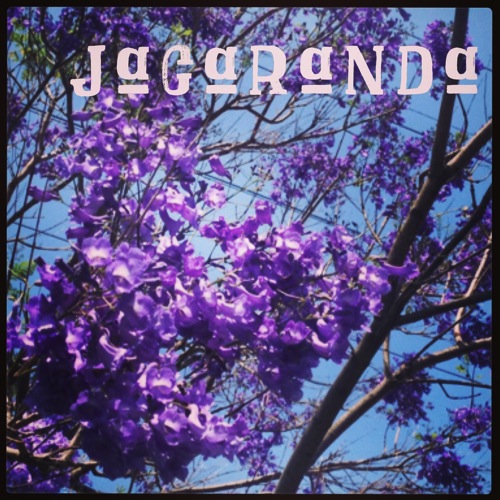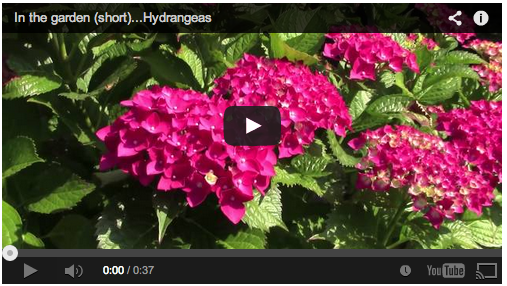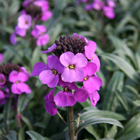Jacaranda mimosifolia
These amazing purple flowering trees burst forth every year at this time and brighten up the city dramatically. You don’t often sees flowers of this color and the masses each tree produces is quite overwhelming. The dropping flowers and seed pods can be a but messy, but it seems worth it to have such a striking specimen in the garden.

Follow DouglasWelch in Instagram
Jacaranda mimosifolia is a sub-tropical tree native to south-central South America that has been widely planted elsewhere because of its beautiful and long-lasting blue flowers. It is also known as Jacaranda, Blue Jacaranda, Black Poui, or as the fern tree. Older sources give it the systematic name Jacaranda acutifolia, but it is nowadays more usually classified as Jacaranda mimosifolia. In scientific usage, the name “Jacaranda” refers to the genus Jacaranda, which has many other members, but in horticultural and everyday usage, it nearly always means the Blue Jacaranda.
The Blue Jacaranda has been cultivated in almost every part of the world where there is no risk of frost; established trees can however tolerate brief spells of temperatures down to around −7 °C (19 °F). In the USA, 48 km (30 mi) east of Los Angeles where winter temps can dip to −12 °C (10 °F) for short several-hour periods, the mature tree survives with little or no visible damage.
In the United States, it grows in parts of Oregon, California, Nevada, Arizona, Texas, and Florida, the Mediterranean coast of Spain, in southern Portugal (very noticeably in Lisbon), southern Italy (in Naples and Cagliari it’s quite easy to come across beautiful specimens). It was introduced to Cape Town by Baron von Ludwig in about 1829. It is regarded as aninvasive species in parts of South Africa and Queensland, Australia, the latter of which has had problems with the Blue Jacaranda preventing growth of native species. Lusaka, the capital of Zambia, and Harare, the capital of Zimbabwe, also see the growth of many Jacarandas. — Wikipedia
More information on Jacaranda mimosifolia:
- Acanthus
- Amaryllis
- Apricot (Prunus armeniaca)
- Azalea
- Banana
- Bonsai
- Bougainvillea
- Brugmansia
- Butterfly (Lepidoptera)
- California Flannelbush (Fremontodendron californicum)
- California Poppy (Eschscholzia californica)
- Calla Lily (Zantedeschia aethiopica)
- Castor Bean (Ricinus)
- Caltapa
- Chives (Allium schoenoprasum)
- Clematis
- Camellia
- Currant (Ribes)
- Dahlia
- Datura
- Japanese Cherry (Prunus serrulata)
- Daffodil (Narcissus)
- Dietes (Fortnight Lily)
- Dudleya
- Echinacea
- Ecualyptus
- Freesia
- Fungi
- Gerbera Daisy
- Grape (Vitis vinifera)
- Hibiscus (Malvaceae)
- Iris
- Joshua Tree (Yucca brevifolia)
- Kniphofia “Red Hot Poker”
- Lantana
- Lavender (Lavendula)
- Kousa Dogwood (Cornus kousa)
- Magnolia x soulangeana (Saucer Magnolia/Tulip Tree)
- Marigold (Calendula officinalis)
- Matilija Poppy (Romneya)
- Morning Glory (Convolvulaceae)
- Nandina
- Orange
- Orchid from the Southern California Spring Garden Show 2013
- Oriental Poppy (Papaver orientale)
- Polygonatum (Solomon’s Seal)
- Paperwhites
- Pineapple (Ananas comosus)
- Primula (Primrose)
- Queen Anne’s Lace (Daucus carota)
- Rosa ‘Mikado’
- Rudbeckia
- Salvia
- Squirrel
- Succulents
- California Sycamore (Platanus racemosa)
- Sweet Potato (Ipomoea batatas)
- Tomato
- Water Lily (Nymphaeaceae)
- Wisteria





